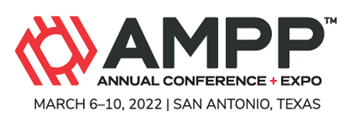Search
Products tagged with 'hydrogen embrittlement'
View as
Sort by
Display
per page
Fatigue and Fracture Resistance of Different Line Pipe Grade Steels in Gaseous H2 Environment
Product Number:
51324-21101-SG
Publication Date:
2024
$40.00
Fatigue And Static Crack Growth Rate Study Of X-65 Line Pipe Steel In Gas Transmission Pipeline Applications
Product Number:
51321-16721-SG
Publication Date:
2021
$20.00
Field Data Collection for Cathodic Protection and Hydrogen Embrittlement of Super Duplex Stainless Steel for Deep Sea Application - Use of Low Voltage Anode
Product Number:
51324-20693-SG
Publication Date:
2024
$40.00
Fitness-for-Purpose Research of OCTG for Underground Gas Storage Applications in H2/CO2 Environments
Product Number:
51320-14698-SG
Publication Date:
2020
$20.00
High Performance Alloy 955 for Hydrogen Charging Environments
Product Number:
51324-20858-SG
Publication Date:
2024
$40.00
High Strength Austentitic Stainless Steels for Hydrogen Applications at High Strength
Product Number:
51324-20780-SG
Publication Date:
2024
$40.00
High-strength Nickel Low Alloy Steels for Oil and Gas Equipment: ASTM A508 Grade 4N under cathodic protection and simulated sour environments.
Product Number:
51320-14706-SG
Publication Date:
2020
$20.00
Hydrogen Charging Of Armco Iron And L80 Steel In Various Electrolytes
Product Number:
51322-17604-SG
Publication Date:
2022
$20.00
Hydrogen embrittlement of high strength austenitic stainless steels
Product Number:
51323-19269-SG
Publication Date:
2023
$20.00
Hydrogen Embrittlement of SS316L Instrument Tubing in a Hydroprocessing Unit
Product Number:
51320-14357-SG
Publication Date:
2020
$20.00
Hydrogen Embrittlement Susceptibility in Corrosion Resistant Materials for Fasteners
Product Number:
51323-18763-SG
Publication Date:
2023
$20.00
Hydrogen Embrittlement Susceptibility of Steel Armour Wires for Flexible Pipes
Product Number:
51320-14489-SG
Publication Date:
2020
$20.00












